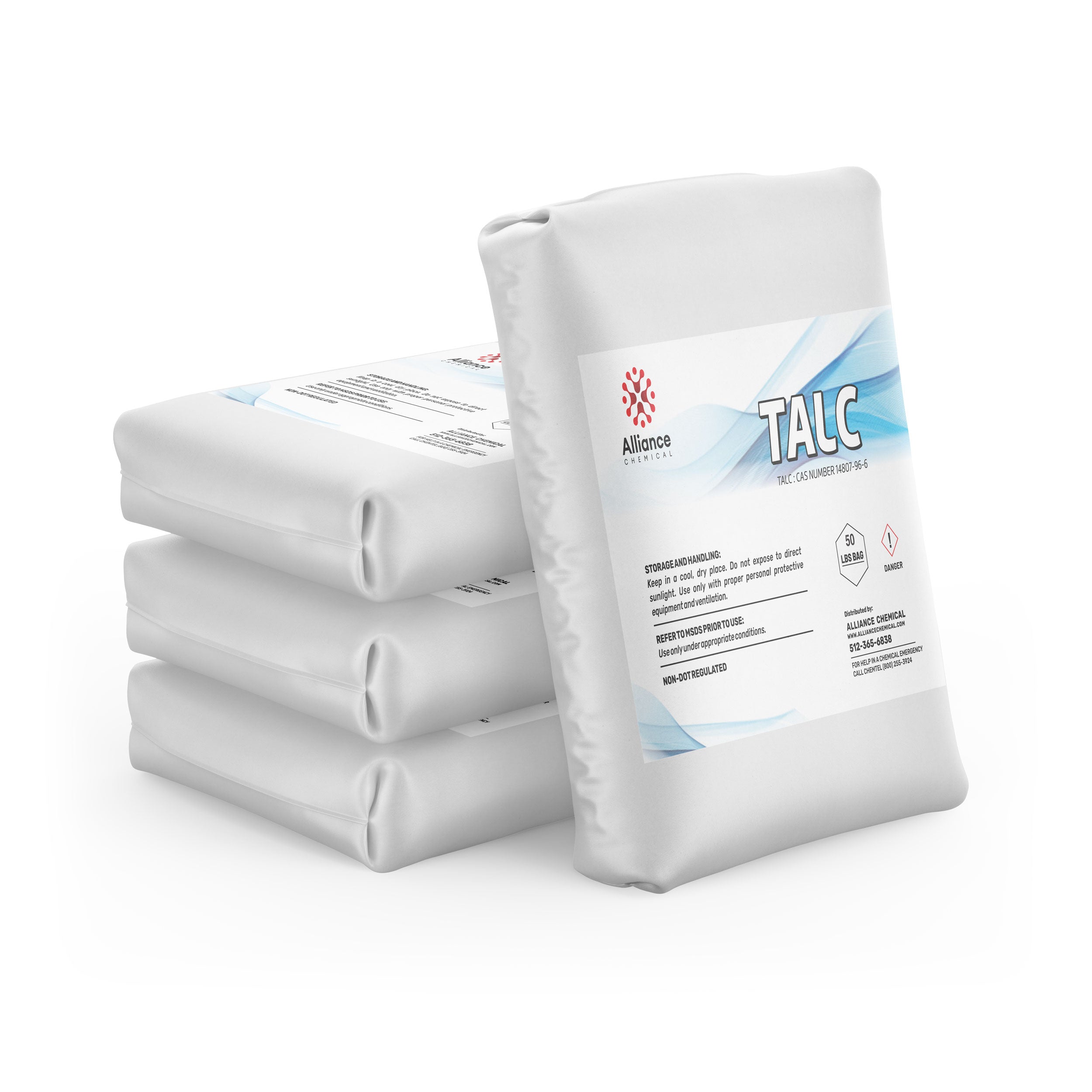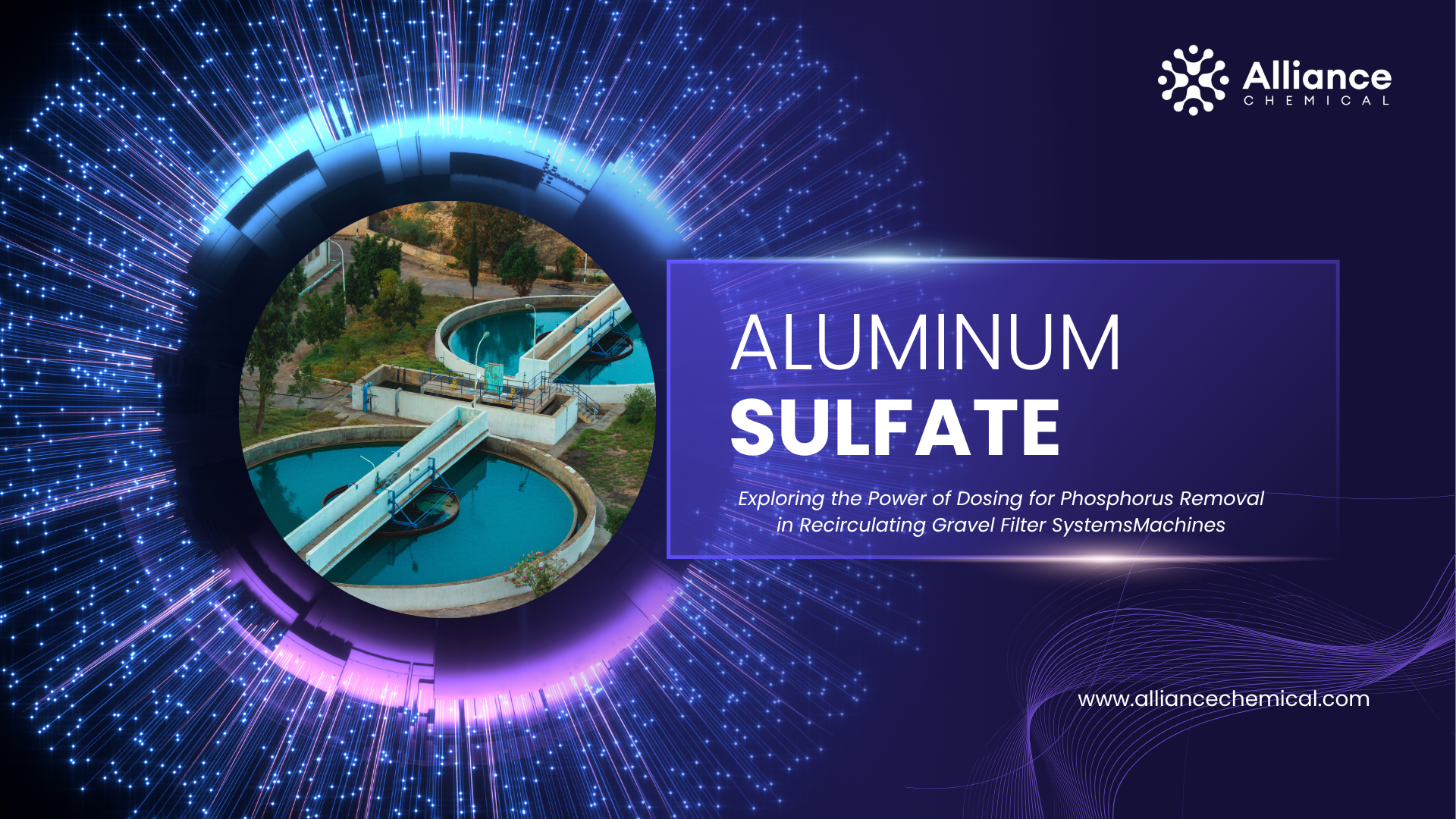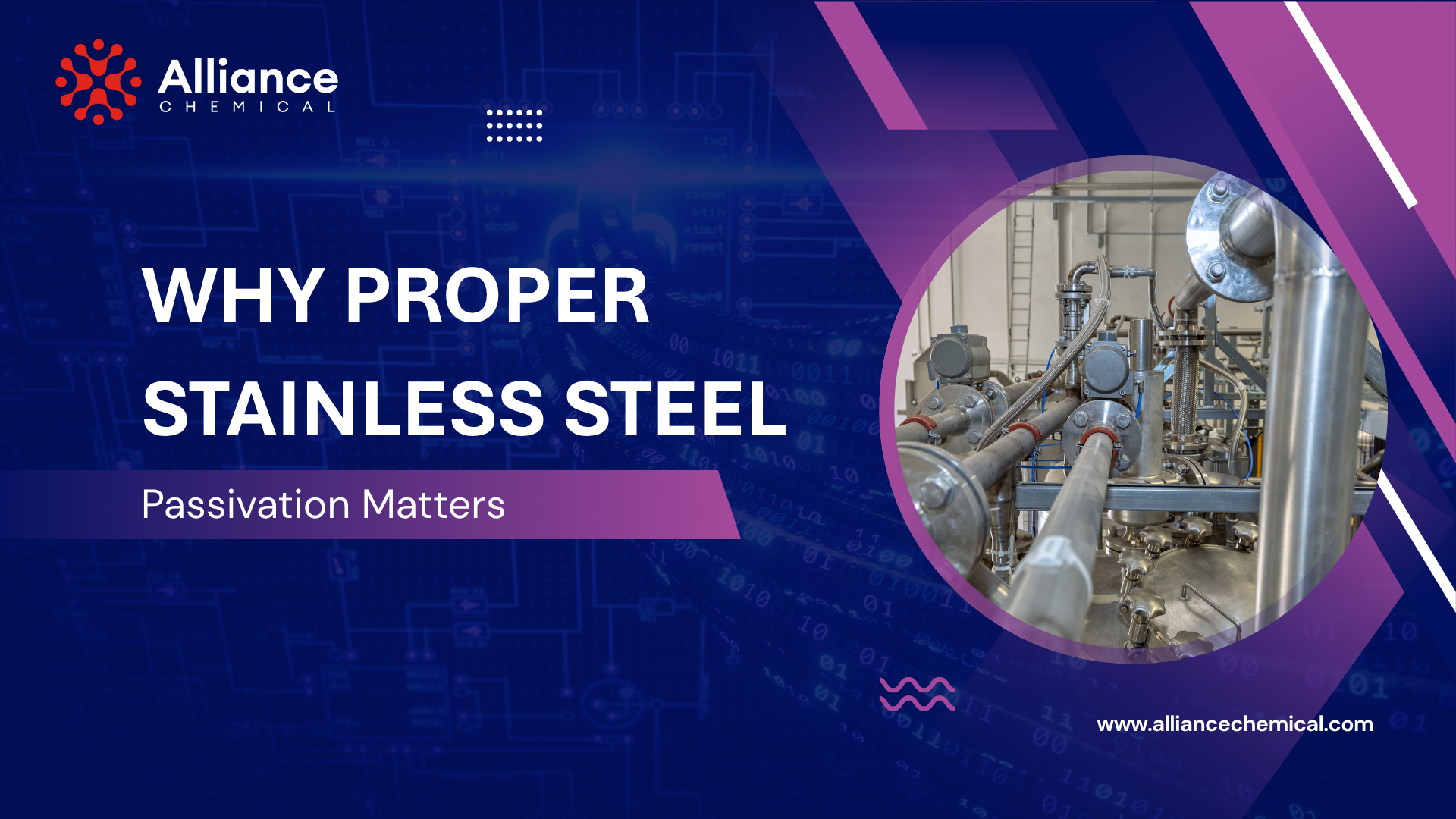
Spec-Grade Talc for Aerospace: Enhancing Polymers & Components
Table of Contents
Summary
Discover how Alliance Chemical's A-A-59303B spec-grade talc acts as a critical, cost-effective additive in aerospace. Learn how it enhances polymer stiffness, FST compliance, rubber durability, and coating protection for demanding aviation applications, improving performance without compromising on safety or quality.
An in-depth look at how Alliance Chemical's A-A-59303B compliant talc functions as a critical additive, enhancing polymers, rubbers, and coatings for improved performance, FST compliance, and favorable stiffness-to-weight ratios in demanding aerospace applications.
Talc in Aerospace: Engineering Value Beyond the Surface
In the high-stakes aerospace sector, every material selection is critical, balancing performance, weight, safety, and cost. While advanced alloys and exotic composites often capture the spotlight, foundational industrial minerals like talc serve as unsung heroes. Processed to meet rigorous specifications such as A-A-59303B, talc transforms into a strategic functional additive. It quietly enhances polymers for interior structures, fortifies rubbers for essential seals, and optimizes coatings against harsh environments, contributing significantly to the overall integrity and efficiency of aerospace systems.

Alliance Chemical provides industrial talc grades, including those compliant with A-A-59303B, that empower aerospace engineers and formulators to achieve demanding performance targets. This isn't just about filling volume; it's about leveraging talc's unique morphology and properties to deliver tangible benefits like improved stiffness-to-weight ratios, enhanced dimensional stability, better FST (Fire, Smoke, Toxicity) performance, and cost-effective material solutions without compromising on quality or safety.
Alliance Chemical: Your Strategic Partner for Spec-Compliant Industrial Minerals
At Alliance Chemical, we specialize in supplying high-quality talc and a broad portfolio of industrial and lab chemicals. Our adherence to specifications like A-A-59303B, coupled with our commitment to quality, makes us a trusted supplier for the aerospace industry. Discover how our materials can elevate your applications.
Decoding Alliance Chemical's A-A-59303B Talc: Properties & Implications
The talc provided by Alliance Chemical, particularly grades meeting A-A-59303B (e.g., Type 1 and Type 4), is an engineered industrial mineral. Understanding its key characteristics, as reflected in a typical Certificate of Analysis (COA), is crucial for aerospace applications:
-
A-A-59303B Specification Compliance: This U.S. government specification provides a standardized baseline for technical talc. For an aerospace buyer, this means a degree of assurance regarding product consistency in parameters like particle size distribution (PSD), chemical composition (within defined limits for industrial grades), and bulk density.
- Type 1: Often considered a general-purpose grade, suitable for various polymer and coating applications.
- Type 4: Typically tailored for rubber compounding, with PSD and surface characteristics optimized for elastomer reinforcement and processing.
- Particle Size Distribution (PSD): A COA showing "~0.9% Retained on 325 Mesh" indicates that over 99% of particles are finer than 44 microns (0.044 mm). While this defines the top cut, the *median particle size (d50)* and overall distribution (not typically on a basic COA) are more critical for predicting performance. A 44-micron top cut is generally suitable for imparting stiffness and dimensional stability in polymers and for many rubber applications. Finer grades (e.g., d50 < 5-10 microns) would offer better impact strength and surface finish but may come at a higher cost.
-
Loss on Ignition (LOI ~10.8%): Pure talc (magnesium hydroxy silicate) has a theoretical LOI of ~4.76%. The higher LOI seen in these industrial grades primarily indicates the presence of associated carbonate minerals (e.g., magnesite, dolomite).
- Processing Implication: Carbonates begin to decompose (releasing CO₂) at temperatures typically above 350-400°C, though this can vary. Most thermoplastic processing for aerospace components (e.g., PP, PA, PBT) occurs below these temperatures, making this talc suitable. However, for polymers processed at very high temperatures or for applications requiring extreme thermal stability/low outgassing (e.g., some PEEK applications or vacuum environments in space), this LOI would be a concern, and a purer, low-LOI talc would be necessary.
- Color (Gray): The gray hue stems from trace mineral impurities. This is typical for cost-effective industrial talcs and is generally acceptable for functional, non-aesthetic aerospace parts (e.g., internal brackets, seals, primer coats) or components that are subsequently pigmented or painted.
The Uncompromising Demand: Certified Asbestos-Free Talc
Crucially, all talc intended for aerospace (or any other application) MUST be certified asbestos-free. Alliance Chemical rigorously ensures its talc products meet this non-negotiable safety standard through stringent testing and quality assurance protocols. Aerospace customers should always demand and verify asbestos-free certification.
These properties position Alliance Chemical's A-A-59303B talc as a reliable, functional additive for numerous performance-driven yet cost-sensitive aerospace components where extreme purity or whiteness is not the primary driver.
Strategic Reinforcement: Talc in Aerospace Polymers & Composites
The strategic incorporation of A-A-59303B talc into aerospace-grade polymers (e.g., Polypropylene, Polyamides, PBT) and some composite systems offers significant engineering advantages, particularly for interior components and non-primary structures:
- Enhanced Stiffness (Flexural Modulus) & HDT: Talc's platy particles act as rigid, high-aspect-ratio reinforcements. When properly dispersed, they effectively increase the flexural modulus of polymers like polypropylene by up to 2-3 times at typical loading levels (20-40 wt%). This increased stiffness also translates to a higher Heat Deflection Temperature (HDT), often by 10-20°C or more, allowing parts to maintain structural integrity at elevated operational temperatures common in avionics enclosures or near cabin lighting.
- Superior Dimensional Stability & Reduced CLTE: Talc's inherent rigidity and low coefficient of linear thermal expansion (CLTE) help constrain polymer chain movement during heating/cooling cycles. This results in significantly reduced warpage and shrinkage in molded parts (especially large, flat panels) and a lower overall CLTE for the composite, critical for maintaining tight tolerances in assemblies. Isotropic orientation of finer talc particles can further enhance this effect.
- Improved FST Performance Contribution: In halogen-free flame retardant systems for aircraft interiors (e.g., based on phosphorus or nitrogen compounds), talc can act as a valuable synergist. Its lamellar particles contribute to char formation and create a physical barrier, reducing heat release rates and smoke generation, helping to meet stringent FAA regulations like FAR 25.853.
- Lightweighting through Design Optimization: While talc adds density to the polymer itself (talc SG ~2.7-2.8 vs. PP SG ~0.9), the substantial increase in stiffness allows engineers to design parts with thinner wall sections to achieve the same or even superior structural performance. This "down-gauging" capability can lead to overall component weight reduction, a key objective in aerospace.
- Enhanced Scratch & Mar Resistance: In certain polymers, particularly polyolefins, the presence of talc at the surface can improve scratch and mar resistance for interior trim and panels.
The key to unlocking these benefits lies in proper compounding techniques to ensure good talc dispersion and interfacial adhesion with the polymer matrix, sometimes aided by compatibilizers or coupling agents for more demanding applications.
Optimizing Aerospace Elastomers: The Role of A-A-59303B Type 4 Talc
Aerospace systems rely heavily on elastomeric components for sealing, vibration isolation, and fluid conveyance. A-A-59303B Type 4 talc is specifically engineered as a functional additive for rubber compounds (e.g., EPDM, Nitrile (NBR), Neoprene (CR), Silicone) used in these critical applications:

- Targeted Reinforcement & Mechanical Properties: Talc increases hardness (durometer), modulus, and tear strength in many elastomers. Unlike carbon black, it provides a "whiter" or lighter-colored reinforcement, though Alliance Chemical's industrial talc is gray. Its platy structure can also improve abrasion resistance in dynamic seals.
-
Enhanced Processability:
- Reduced Nerve & Die Swell: Talc helps to reduce the elastic recovery (nerve) of unvulcanized rubber compounds, leading to smoother extrusions and more consistent profiles for hoses and seals. It also helps control die swell.
- Improved Mold Flow & Anti-Tack: It can improve flow into complex molds and acts as an effective partitioning agent, preventing uncured rubber sheets or components from sticking together.
- Moderate Barrier Property Enhancement: The lamellar structure of talc particles creates a more tortuous path for the permeation of gases and fluids. This can provide a modest improvement in resistance to aerospace fluids like hydraulic oils (e.g., Skydrol™, though chemical compatibility of the base elastomer is primary), jet fuel, and de-icing fluids. This is particularly beneficial for seals and gaskets.
- Vibration Damping and Noise Reduction: Talc-filled elastomers can exhibit increased hysteresis (energy absorption capability). This makes them effective for vibration damping pads, engine mounts, and other components designed to reduce noise, vibration, and harshness (NVH) within the aircraft structure.
- Controlled Swell in Fluids: By occupying volume and interacting with the polymer network, talc can help to moderate the swelling of rubber compounds when exposed to certain fluids, maintaining dimensional stability of seals.
The consistent quality of A-A-59303B Type 4 talc is vital for achieving reproducible performance in these often safety-critical rubber components, where a seal failure or hose rupture can have severe consequences.
Boosting Durability and Functionality in Aerospace Coatings & Sealants
Aerospace coatings and sealants are sophisticated formulations designed for extreme protection and specific functionalities. Industrial talc grades, like those meeting A-A-59303B, serve as valuable multifunctional additives in these systems, particularly in primers, fillers, and functional sealants:
- Enhanced Anti-Corrosion Barrier (Primers): The key contribution of talc in anti-corrosive primers (e.g., epoxy-based or polyurethane primers for aluminum and composite substrates) is its physical barrier effect. The overlapping lamellar talc platelets create a significantly more tortuous path for the ingress of moisture, oxygen, and corrosive ions, delaying their reach to the substrate and extending the service life of the airframe.
- Rheology Modification & Application Control: Talc imparts thixotropy and improves sag resistance in high-build coatings and sealants. This allows for thicker application in a single pass without dripping or sagging, crucial for efficient application and ensuring adequate protective film thickness, especially on vertical or complex surfaces.
- Improved Sandability & Intercoat Adhesion: In surfacers and sanding primers, talc's relative softness and particle shape contribute to easy sandability, creating a smooth, uniform surface ideal for topcoat application. This can also enhance mechanical keying for improved intercoat adhesion.
- Matting Efficiency & Sheen Control: While the ~44 micron top cut of A-A-59303B talc is generally too coarse for fine matting in high-gloss topcoats, it can contribute to sheen reduction in primers, functional coatings (e.g., low-observable military coatings), or interior finishes where a matte appearance is desired.
- Crack Resistance & Film Reinforcement: Talc particles can act as stress dissipaters within the coating film, improving resistance to mud-cracking during drying (especially in high-build coatings) and enhancing overall film toughness and flexibility.
- Extender & Solids Contribution in Sealants: In polysulfide, polyurethane, or silicone aerospace sealants, talc functions as a cost-effective extender that contributes to the solids content, helps control shrinkage, and can improve mechanical properties like tear strength and compression set.
Careful selection of talc particle size and loading level is critical to balance these benefits without negatively impacting other properties like gloss (if undesired) or overall coating flexibility. For many aerospace applications, the cost-performance balance offered by A-A-59303B talc is highly advantageous.
The Alliance Chemical Advantage: Precision, Reliability, and Partnership for Aerospace
The aerospace industry's stringent demands for material quality, supply chain stability, and technical veracity require more than just a product; they necessitate a reliable partner. Alliance Chemical offers distinct advantages for aerospace customers sourcing talc and other critical chemicals:
- Assured Specification Compliance (A-A-59303B): We provide talc that rigorously meets or exceeds the requirements of A-A-59303B (Types 1, 4, etc.), ensuring a foundation of quality and predictable performance for your formulations and components.
- Commitment to Asbestos-Free Materials: Safety is non-negotiable. Our talc is certified asbestos-free, supported by robust testing and quality assurance, providing peace of mind and regulatory compliance.
- Lot-to-Lot Consistency: Aerospace manufacturing relies on minimal process variation. Our quality control systems are designed to deliver exceptional batch-to-batch consistency in particle size, chemistry (for industrial grades), and physical properties, minimizing adjustments in your processes.
- Secure and Responsive Supply Chain: We understand the critical nature of material availability. Alliance Chemical maintains a robust inventory and responsive logistics to support your production schedules and mitigate supply chain risks. Explore our customer service commitments.
- Technical Collaboration & Support: Our team possesses knowledge of industrial minerals and their applications. We are available to discuss your specific requirements, provide detailed technical data, and assist in selecting the optimal talc grade for your aerospace application. Contact us to start a technical discussion.
- Comprehensive Chemical Portfolio: Beyond talc, Alliance Chemical offers a wide range of industrial chemicals, solvents, and acids that may be relevant to other aerospace manufacturing processes, allowing for consolidated sourcing.
Choosing Alliance Chemical is an investment in quality, reliability, and a partnership focused on supporting the innovation and exacting standards of the aerospace industry.
Technical FAQs: A-A-59303B Talc in Aerospace Applications
How does the particle size distribution of A-A-59303B talc influence its reinforcing effect in polymers?
While the A-A-59303B spec might primarily define a top-size cut (e.g., % retained on 325 mesh, ~44 microns), the overall particle size distribution (PSD), including median particle size (d50) and aspect ratio of the lamellar particles, significantly impacts reinforcement. A finer d50 (e.g., 5-15 microns for many industrial grades) with a good aspect ratio generally provides a better balance of stiffness, impact strength, and HDT improvement. Coarser particles might increase stiffness but can reduce impact strength and lead to poorer surface finish. The ~44 micron top cut of typical A-A-59303B talc is effective for general stiffness and dimensional control, but for optimal mechanicals, the full PSD should be considered in formulation development.
Can Alliance Chemical's industrial talc (gray) be used if a white or colored aerospace part is needed?
Yes, absolutely. While our A-A-59303B talc is typically gray due to natural trace minerals, it's highly effective as a functional filler. If the final aerospace component requires a specific color or whiteness, the polymer compound containing the gray talc can be easily masterbatched with appropriate pigments to achieve the desired final color. The talc's functionality (stiffness, HDT, dimensional stability) remains, while the color is achieved through standard pigmentation techniques. This is common practice for many interior aircraft components.
What are the typical loading levels of talc in aerospace polymers and rubbers, and what are the trade-offs?
Typical loading levels for talc in thermoplastics (like PP, PA for aerospace interiors) range from 10% to 40% by weight. In rubbers, it can vary from 20 phr (parts per hundred rubber) to over 100 phr. Trade-offs: Higher Loading: Generally increases stiffness, HDT, dimensional stability, and hardness (in rubber). Can also improve barrier properties and FST contribution. However, it also increases density, can reduce impact strength (especially if dispersion is poor or above optimal levels), may decrease elongation, and can increase viscosity during processing. Lower Loading: Less impact on density and ductility, but also less pronounced improvements in stiffness and thermal properties. The optimal loading level is application-specific and determined by balancing desired performance enhancements against any potential negative impacts on other critical properties and processability.
Are there surface treatments available for talc to improve its performance in aerospace polymers?
While Alliance Chemical's standard A-A-59303B talc is typically an untreated industrial grade, surface-treated talcs are available in the broader market (e.g., silane or stearate treatments). These treatments can improve dispersion, enhance interfacial adhesion between the talc and specific polymer matrices (especially non-polar polymers like PP or more demanding engineering plastics), leading to better mechanical properties and moisture resistance. If your application demands enhanced bonding, discussing the potential for or sourcing of surface-treated talc is a valid consideration, though it often comes at a premium.
How does the LOI of ~10.8% for this talc impact its suitability for space applications with strict outgassing requirements?
The ~10.8% LOI, primarily due to associated carbonates, would generally make this specific grade of talc unsuitable for most space applications with stringent outgassing requirements (e.g., per NASA SP-R-0022A or ECSS-Q-ST-70-02C). The decomposition of carbonates at elevated temperatures (even moderate sustained heat in vacuum) can release CO₂ and other volatiles. This outgassing can contaminate sensitive optical surfaces, solar arrays, or electronics. For space applications, ultra-low LOI, high-purity talcs (or alternative non-outgassing fillers) are typically required. This A-A-59303B talc is best suited for terrestrial and atmospheric aerospace applications.
Engineer Superior Aerospace Components with Alliance Chemical's A-A-59303B Talc
Unlock enhanced performance, achieve critical FST compliance, and optimize the stiffness-to-weight ratio of your aerospace materials. Alliance Chemical delivers consistent, spec-grade talc, backed by technical expertise and a commitment to the aerospace industry's exacting standards.
View Our Talc Offerings Request Technical Data or Quote








